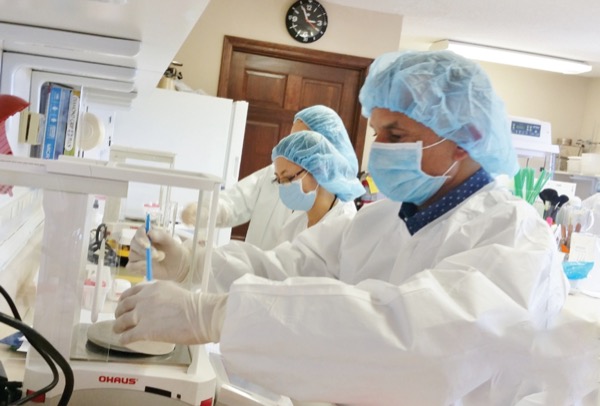Emotional intelligence may be an effective and overlooked tool for training and assessing the competency of your sterile compounding staff, Samantha Tricarico, CPhT, CSPT, a senior pharmacy technician educator at Optum Infusion Services, told attendees at NHIA 2024, in Austin, Texas.
For starters, Ms. Tricarico said, consider individual learning styles, including:
- visual—pictures, handouts and job aids;
- auditory—videos with sound, lectures and scenario discussions;
- reading/writing—workbooks, Post-its and whiteboards; and
- kinesthetic—shadowing, hands-on and fidgets.
Most adults are hybrid learners and need exposure to several of the above approaches to process complex ideas, Ms. Tricarico noted. “As an educator, you should identify the processes that compounders need to learn at your organization, and build content appropriately,” she said. “Often you do not need to create these materials from scratch. For example, manufacturers typically have amazing videos that you can make use of.”
Ms. Tricarico listed several processes for which such multimodal training content should be compiled:
- manipulations with vial, syringe and needle, with considerations such as dispensing pins and needleless connectors, bulk vials, and reuse of syringes;
- reconstituting powder vial by drawing a diluent from liquid vial via a syringe or needle, including automated fluid transfer options, reconstituting multiple vials and vented needles;
- adding concentrated drug to diluent, including the addition of pediatric doses less than 1 mL;
- preparing gravity bags for ambulatory patients;
- complex multi-ingredient compounds such as parenteral nutrition; and
- cleaning primary and secondary engineering controls.
Benjamin Bloom’s “Taxonomy of Cognitive Domains” has been applied to education for more than six decades, and targets not only subject matter but also depth of learning students should achieve. Ms. Tricarico explained that the foundational component taxonomy is remembering—didactic training on facts. The next stage in taxonomy, understanding, is achieved in sterile compounding through shadowing. “Have them stand outside the cleanroom suite and watch how the staff operates, how they are intentional in movement, how they mop floors, how they hold the syringe in vial,” she said.
Next up in taxonomy is applying. “This is the hands-on component of learning,” Ms. Tricarico said. “Sit at the tabletop and do the demonstration with them. Provide the vial and syringe, have them hold it for horizontal and vertical airflow, have them reconstitute, and so on.”
All personnel who perform sterile compounding should achieve at least the next step up in Bloom’s taxonomy: analyzing. “This means extrapolating from what you’ve learned to new situations,” she said. “We can’t train them on every scenario that they are going to encounter when they’re in the cleanroom on their own. If they’re in there compounding independently and they receive a complicated order, we don’t want them to panic. Make sure they are empowered to take the next step.”
UW Health Care Direct’s Approach
UW Health Care Direct, in Madison, Wisc., has been using some of these learning strategies in its sterile compounding training, said Cole Seckel, PharmD, the pharmacy operations manager. “We usually start with videos, then move toward didactic items and written assessments, and finally move to shadowing/hands-on demonstrations with our learners,” Dr. Seckel said. “It’s still a work in progress, and we have further opportunities to explore ... the effects that emotional intelligence have on staff training and team dynamics.”
The sources reported no relevant financial disclosures.
{RELATED-HORIZONTAL}
